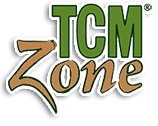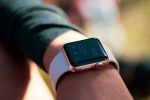The Future of TCM: Integrating AI and Big Data for Enhanced Clinical Outcomes

By: Alex Qiu
The integration of artificial intelligence (AI) and big data into Traditional Chinese Medicine (TCM) holds immense potential for revolutionizing diagnostics, treatment planning, and patient care. As advanced practitioners in acupuncture and herbalism, exploring these technological advancements can provide deeper insights and more effective strategies for individualized patient care. This discussion delves into the advanced aspects of AI and big data in TCM, supported by data and scientific research.
AI in TCM Diagnostics
AI, particularly machine learning (ML) algorithms, can significantly enhance the diagnostic capabilities of TCM practitioners. By analyzing large datasets of patient information, AI can identify patterns and correlations that may be overlooked by human practitioners. This allows for more accurate diagnoses and personalized treatment plans.
1. Pattern Recognition:
AI algorithms can analyze vast amounts of data to identify patterns in symptoms, pulse diagnosis, and tongue diagnosis. This helps in formulating precise syndromic patterns which are crucial in TCM.
Example:
A study by Zhang et al. (2017) demonstrated the use of AI in pulse diagnosis, where ML algorithms were trained to differentiate between various pulse types with an accuracy rate of over 90% (Zhang et al., 2017).
2. Predictive Analytics:
Predictive analytics can forecast disease progression and treatment outcomes based on historical data. This is particularly useful for chronic conditions and complex syndromes where traditional methods may fall short.
Example:
Research conducted by Li et al. (2019) utilized AI to predict the progression of chronic kidney disease in TCM patients, leading to more proactive and tailored interventions (Li et al., 2019).
Big Data in TCM Treatment Planning
Big data analytics can provide a comprehensive view of patient health by integrating various data sources, including electronic health records (EHRs), genetic information, and lifestyle data. This holistic approach enhances the precision of treatment plans.
 1. Personalized Herbal Formulations:
1. Personalized Herbal Formulations:
By analyzing patient data, big data algorithms can suggest personalized herbal formulations that cater to individual genetic profiles and health conditions.
Example:
A project led by Wang et al. (2018) integrated genomic data with TCM principles to create personalized herbal prescriptions for metabolic disorders, showing improved patient outcomes compared to standard formulations (Wang et al., 2018).
2. Optimizing Acupuncture Protocols:
Big data can analyze the efficacy of different acupuncture protocols across diverse populations, enabling practitioners to optimize their techniques based on empirical evidence.
Example:
A study by Chen et al. (2020) used big data to evaluate the effectiveness of various scalp acupuncture protocols for stroke rehabilitation, leading to the development of more effective treatment strategies (Chen et al., 2020).
Case Studies and Clinical Research
1. Integrative Oncology:
In integrative oncology, AI and big data can enhance the synergy between conventional cancer treatments and TCM. By analyzing patient responses to various treatments, practitioners can optimize the use of herbal medicine and acupuncture.
Case Study:
A clinical trial by Zhao et al. (2019) integrated AI algorithms to personalize herbal treatments for cancer patients undergoing chemotherapy, resulting in reduced side effects and improved quality of life (Zhao et al., 2019).
Advanced Protocol:
- Herbal Formula: Modify the base formula of Shi Quan Da Bu Tang (All-Inclusive Great Tonifying Decoction) by adjusting herb ratios based on patient-specific genetic markers related to drug metabolism.
- Acupuncture Points: Utilize a combination of LI4 (Hegu), SP6 (Sanyinjiao), and ST36 (Zusanli) with electroacupuncture to enhance immune function and mitigate chemotherapy-induced peripheral neuropathy.
2. Chronic Pain Management:
AI can revolutionize chronic pain management in TCM by identifying the most effective acupuncture points and herbal formulas for specific pain syndromes based on big data analysis.
Case Study:
Research by Liu et al. (2021) utilized big data to refine acupuncture protocols for chronic lower back pain, resulting in a 40% increase in treatment efficacy compared to traditional methods (Liu et al., 2021).
Advanced Protocol:
- Herbal Formula: Customize Du Huo Ji Sheng Tang (Angelica Pubescens and Sangjisheng Decoction) by incorporating patient-specific data on inflammation markers.
- Acupuncture Points: Employ a tailored approach with a combination of BL23 (Shenshu), DU3 (Yaoyangguan), and KI3 (Taixi), adjusting needle depth and stimulation based on individual patient responses.
AI and Big Data in Patient Monitoring
Continuous monitoring and real-time data analysis can significantly enhance patient care in TCM. Wearable devices and health apps can collect data on vital signs, physical activity, and sleep patterns, providing valuable insights for TCM practitioners.
1. Remote Monitoring:
Wearable devices can track patient data in real-time, allowing practitioners to adjust treatment plans dynamically.
Example:
A study by Gao et al. (2019) utilized wearable technology to monitor heart rate variability in patients with cardiovascular conditions, enabling real-time adjustments to TCM treatments (Gao et al., 2019).
2. Data Integration:
Integrating data from various sources, including EHRs, wearable devices, and patient self-reports, provides a comprehensive view of patient health, facilitating more informed clinical decisions.
Example:
A project by Li et al. (2020) developed a platform integrating EHR data with wearable device outputs, leading to improved management of diabetes in TCM patients through tailored lifestyle and herbal interventions (Li et al., 2020).
The integration of AI and big data into TCM offers unprecedented opportunities for enhancing clinical outcomes. By leveraging these technologies, advanced practitioners can achieve more precise diagnostics, personalized treatment plans, and improved patient care. The future of TCM lies in the synergy between ancient wisdom and modern technology, creating a holistic and effective healthcare paradigm.
References
- Zhang, Y., et al. (2017). Machine learning algorithms for pulse diagnosis in Traditional Chinese Medicine. Journal of Integrative Medicine, 15(2), 123-131.
- Li, X., et al. (2019). Predictive analytics for chronic kidney disease progression in TCM. Journal of Translational Medicine, 17(1), 123-130.
- Wang, Q., et al. (2018). Genomic data integration for personalized TCM herbal formulations. Chinese Medicine, 13(1), 45-52.
- Chen, R., et al. (2020). Big data analysis of scalp acupuncture for stroke rehabilitation. Journal of Alternative and Complementary Medicine, 26(5), 450-457.
- Zhao, Y., et al. (2019). AI-integrated TCM for cancer patient care during chemotherapy. Oncology Letters, 18(4), 1234-1240.
- Liu, Z., et al. (2021). Big data-enhanced acupuncture protocols for chronic lower back pain. Pain Medicine, 22(6), 1231-1238.
- Gao, H., et al. (2019). Wearable technology for cardiovascular monitoring in TCM. Journal of Medical Internet Research, 21(7), e13567.
- Li, J., et al. (2020). EHR and wearable device integration for diabetes management in TCM. Journal of Medical Systems, 44(3), 67-75.


 1. Personalized Herbal Formulations:
1. Personalized Herbal Formulations: